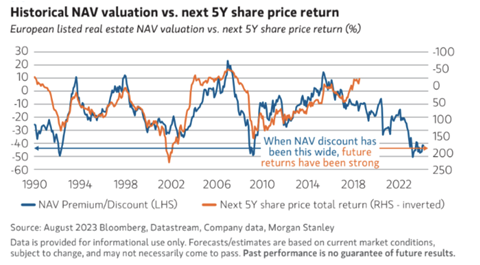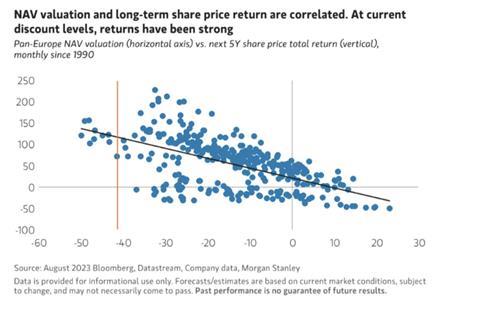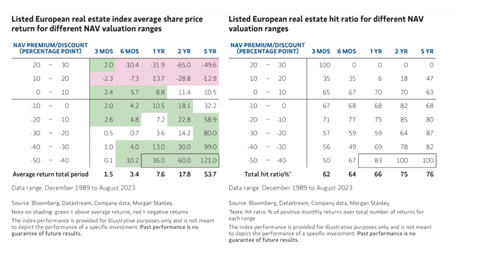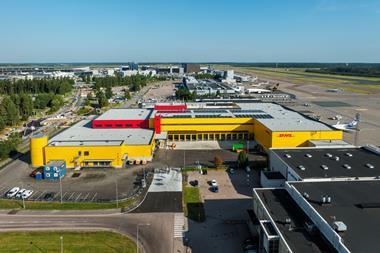Today’s pricing of European REITs presents an attractive entry point for long-term investors, writes Laurel Durkay
Discounts in European listed real estate have rarely been this wide. Long-term investors should take note.

Investors have multiple choices when deciding to invest in real estate: they can buy buildings directly, they can give money to mutual funds that invest in buildings, or they can invest in listed stocks, via companies that develop, own and manage large commercial and residential real estate portfolios in closed-ended, publicly-listed vehicles.
Despite challenges from higher interest rates, public real estate stocks’ discounts to underlying independent appraisal values in Europe are close to historically wide levels, looking back over the last 30 years. On average, future returns for listed real estate increase the wider this discount is. This is particularly relevant on a five-year view and/or when discounts are very extreme.

The discount to last reported net asset value (NAV) of larger European listed real estate companies has expanded to over 40% as at August 2023. These depressed levels are witnessed only occasionally, such as during the global financial crisis of 2008-2009 and the European Exchange Rate Mechanism debacle in 1992.
Other less extreme lows occurred when traditional real estate was out of favour during the tech stock boom of the early 2000s, and, of course, during the COVID-19 pandemic.
These moments of significant uncertainty have offered highly beneficial entry points. Indeed, the earlier examples provided the bases for between 100% and 200% cumulative returns over the following five years, as the listed markets typically priced in forward-looking direct real estate market valuation declines and more.

At the discount witnessed in August 2023, historical data suggests that an almost 120% cumulative return over the next five years may be achievable, a compound annual growth rate of over 17%.
Between December 1989 and February 2023, there was a 100% hit rate of positive five-year total returns when the opening discount to NAV has been between 40% and 50%. While these are extremes, the trend is consistent at lower levels of discount.
When the discount has been between 30% and 40%, the hit rate was still high, at 82% over five years and 69% over one year.

There are some caveats. Normally, wide discounts signal sharp valuation declines in underlying real estate markets that take some time to feed through, and current dislocation has largely been driven by higher interest rates.
Some companies’ balance sheets might not survive this stress and require dilutive capital raisings. But time is a healer – and backtesting returns suggests attractive returns may be on offer, particularly for investors with a medium-term time horizon.


















